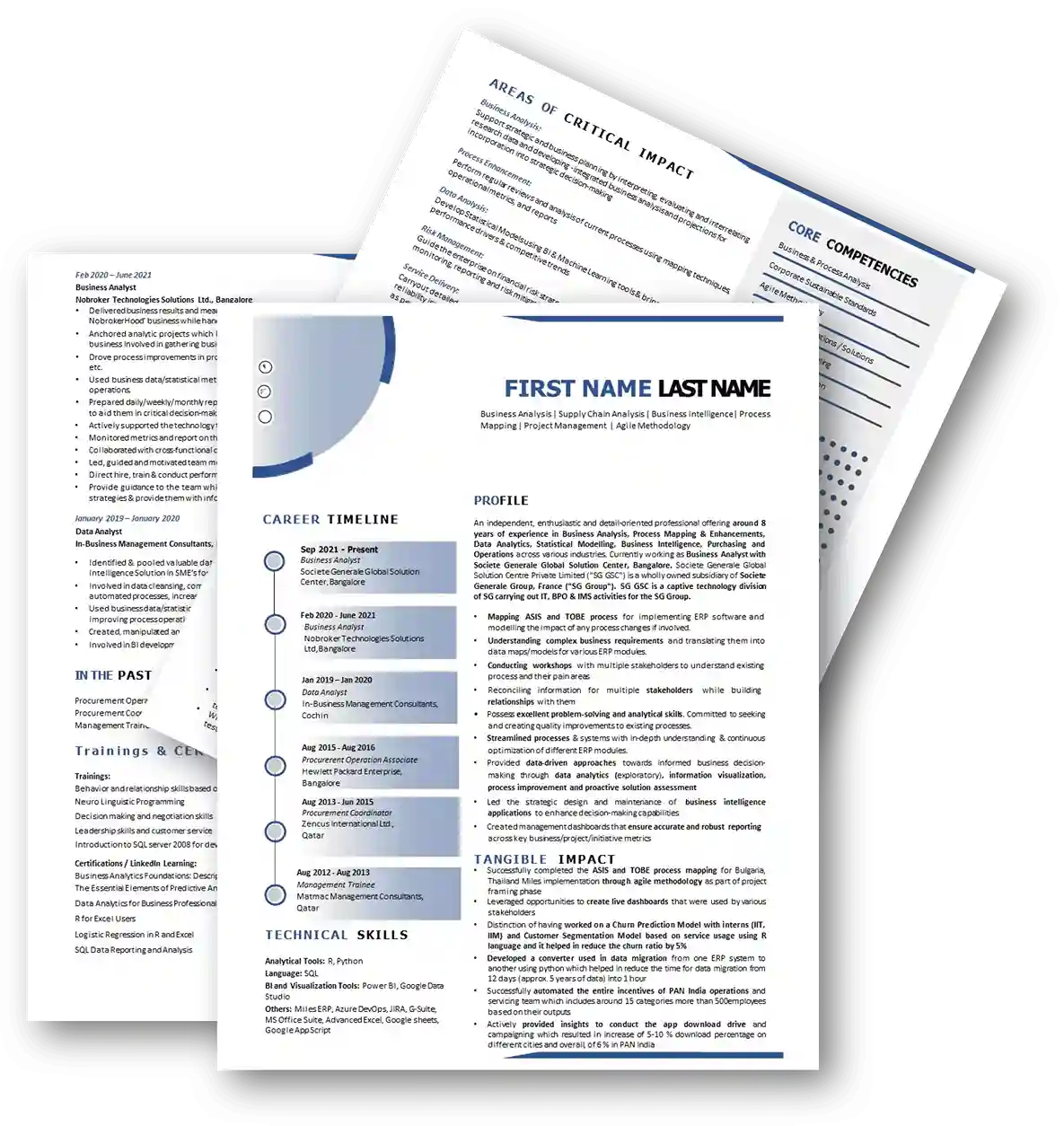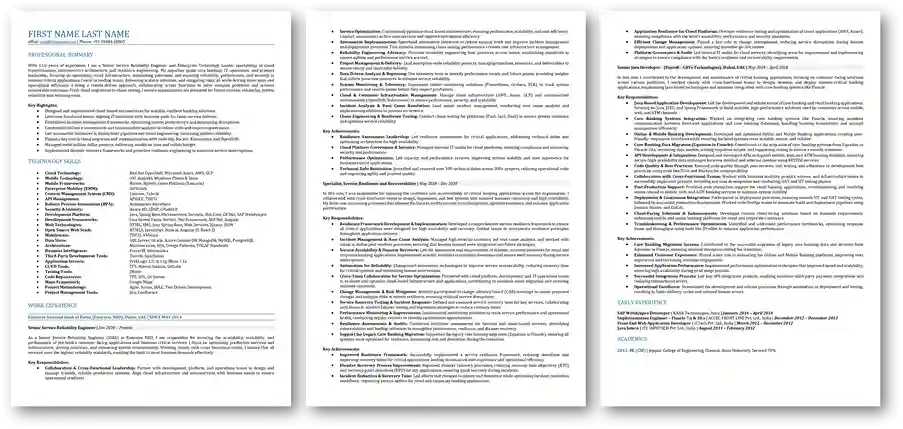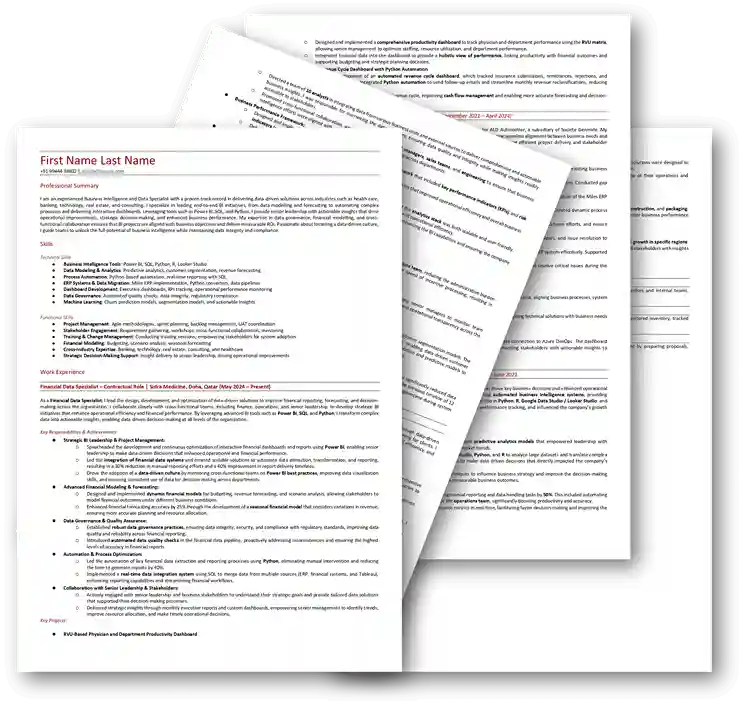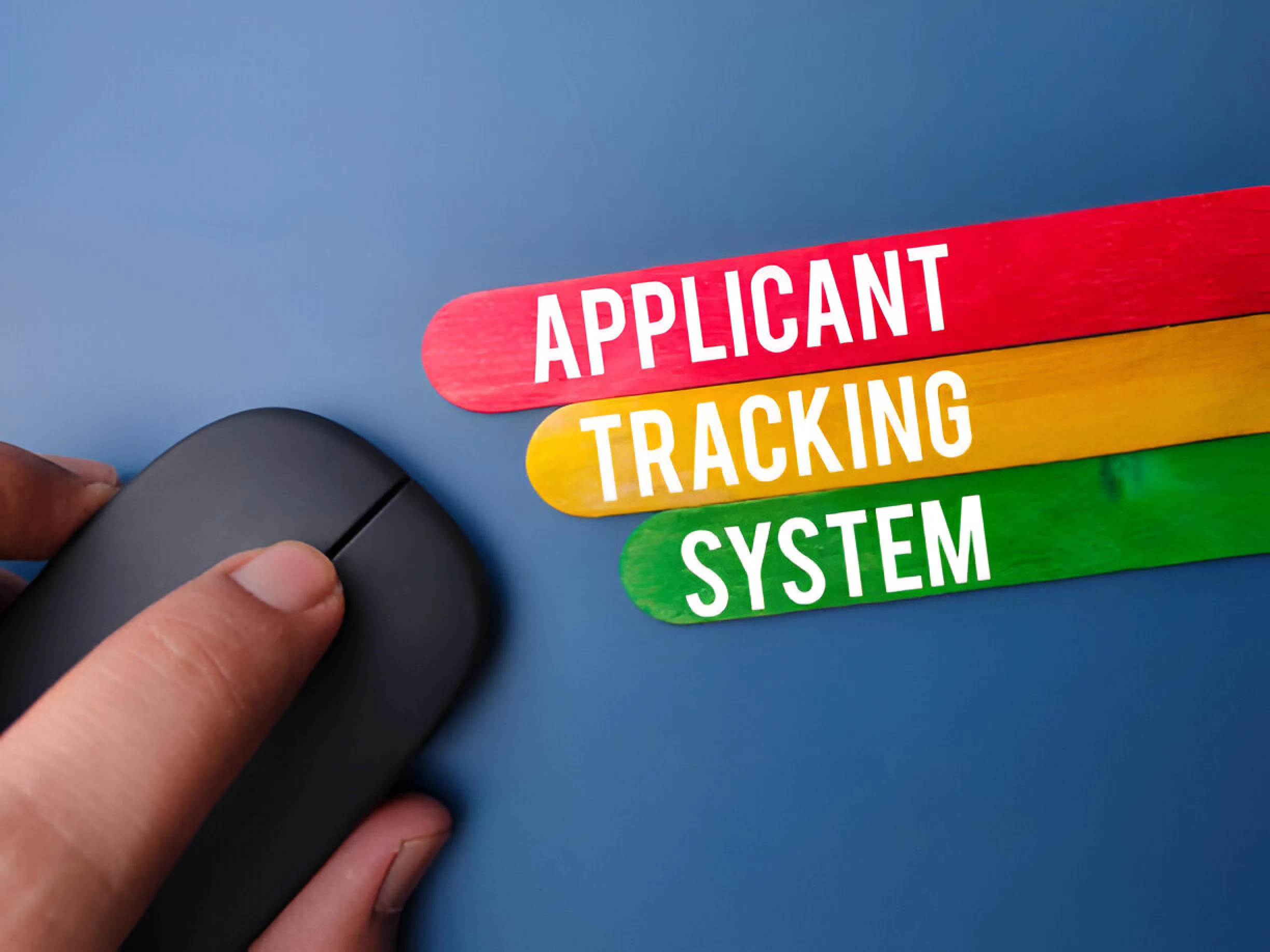BLOG
In the world of modern recruitment, standing out isn’t just about having exceptional skills or experience—it’s about ensuring your resume even reaches the hiring manager’s desk. With Applicant Tracking Systems (ATS) becoming the backbone of hiring processes worldwide, crafting an ATS-compliant resume is not optional; it’s essential.
Over 95% of Fortune 500 companies and an increasing number of small to medium-sized enterprises rely on ATS to streamline hiring. These systems evaluate resumes based on relevance, structure, and keyword optimization, often deciding within seconds whether a candidate moves forward in the process.
But here’s the catch, while many job seekers attempt to create ATS-compliant resumes on their own, most fail due to a lack of understanding of ATS functionality. In this guide, we’ll explore how ATS works, uncover common mistakes, and provide actionable strategies for crafting resumes that stand out in this highly automated landscape.
ATS Explained: Your First “Interviewer” Is a Machine
In the digital age of recruitment, Applicant Tracking Systems (ATS) function as the all-important gatekeeper standing between job seekers and their dream roles. Before a hiring manager even glances at your resume, it must first survive a rigorous assessment by ATS—a system designed to streamline hiring for recruiters by efficiently filtering through the deluge of applications. While this technology has revolutionized the hiring process, it has also introduced unique challenges for job seekers, particularly for senior professionals aiming for leadership roles.
Here’s a closer look at how ATS operates and what it means for your career trajectory:
How ATS Works: The Digital Screening Process
Keyword Matching:
ATS software is programmed to scan resumes for specific keywords and phrases that match the job description. These keywords are typically tied to the role’s essential skills, qualifications, and industry jargon.
- For example, an ATS searching for a Chief Marketing Officer might prioritize terms like “brand positioning,” “digital transformation,” or “ROI optimization.”
- On the other hand, a resume for a CFO might need phrases like “P&L management,” “risk mitigation,” or “financial forecasting.”
Key Insight:
Simply listing your job responsibilities won’t cut it. Your resume needs to mirror the language and terminology used in the job posting while showcasing how you’ve embodied those qualities throughout your career.
Parsing and Scoring:
After scanning for keywords, ATS parses (breaks down) your resume into categories like work experience, education, and skills. It then scores your application based on how well it matches the job requirements.
The Hidden Cost of a Poorly Formatted Resume
A visually appealing resume may grab your attention, but if it’s not formatted with ATS in mind, it could be the very reason your application gets rejected. Wrong formatting choices can render your qualifications invisible to both ATS and recruiters, effectively derailing your chances before you even begin.
Here’s how improper formatting can sabotage your job search:
Complex Layouts Confuse ATS:
Resumes with multi-column layouts, graphics, or tables might look impressive to the human eye, but to ATS software, these elements are often unreadable. Sections of your resume may appear jumbled, skipped, or misinterpreted. For example:
- A two-column resume with “Skills” on one side and “Experience” on the other might cause ATS to miss key skills entirely.
- A graphic timeline of work history might not be parsed correctly, leaving recruiters without critical details.
Irregular Fonts and Symbols
Fancy fonts, decorative symbols, and custom bullets can confuse ATS parsing tools. A symbol like a creative arrow might show up as a question mark or be completely ignored, leading to gaps in your resume’s data.
Non-Standard Section Headings
ATS is programmed to scan for conventional headings like “Work Experience,” “Education,” and “Skills.” If you label these sections with creative alternatives like “My Career Journey” or “Knowledge Arsenal,” ATS may fail to recognize them, excluding entire sections of your resume.
Embedded Images and Charts
Resumes that include visual elements like headshots, charts, or infographics may be rejected outright. ATS systems cannot read images, and this could result in your entire application being discarded.
Improper File Formats
Submitting your resume in unsupported formats, such as .jpeg or an unoptimized PDF, can cause ATS systems to either reject your application or scramble the text entirely. The safest formats are ATS-friendly .docx or properly formatted PDFs.
Real-Life Example of a Formatting Fail
Consider a senior executive who submitted a resume with an intricate design featuring columns, graphics, and decorative icons. While it looked visually stunning, ATS software misread key details, placing their education in the “Skills” section and omitting certifications altogether. The result? They were ranked poorly, despite being highly qualified for the role.
What the ATS Looks For:
- Are the keywords distributed naturally across your resume?
- Do your qualifications align with the job's seniority level?
- Are critical sections (like “Professional Experience” and “Skills”) easy for the system to identify?
Tip for Senior Professionals:
An ATS-friendly resume uses standardized section headers (e.g., “Work Experience” instead of “Career Highlights”) and avoids unconventional formats like multi-column layouts that can confuse parsing software.
Ranking Candidates:
Once parsed, ATS ranks resumes in order of relevance to the job description. Recruiters typically set thresholds—such as the top 20% of applications—to decide which candidates progress to the next stage. If your resume isn’t in the top bracket, it might never reach human hands.
The Challenge for Senior Leaders:
With years of experience and diverse accomplishments, senior professionals often face a dilemma: how do you distill decades of work into a format that scores well with ATS while still resonating with human decision-makers?
What This Means for Senior Professionals
For C-suite executives, directors, and other senior-level leaders, ATS compliance is about more than just ticking boxes. It requires a strategic approach to position yourself as an indispensable asset to the organization. This involves crafting a resume that balances:
- Technical Precision: Ensuring all ATS requirements are met (e.g., keywords, file formatting, and section organization).
- Executive Storytelling: Highlighting leadership impact, measurable outcomes, and industry expertise in a compelling way that appeals to recruiters and hiring managers.
For Example:
If you’re a VP of Operations applying for a role focused on process optimization, ATS won’t recognize your value unless your resume explicitly addresses the job’s priorities. Instead of listing generic achievements like “improved operational efficiency,” tailor your resume to include phrases like:
- “Streamlined supply chain processes, reducing delivery time by 30% and saving $3M annually.”
- “Implemented Lean Six Sigma principles to enhance production quality and decrease waste by 25%.”
This approach ensures ATS ranks your resume highly while also presenting your accomplishments in a way that captivates recruiters.
The Takeaway: ATS Is Both an Opportunity and a Challenge
While ATS poses a barrier to entry for many job seekers, it also presents a unique opportunity for those who understand how to navigate its requirements. By mastering the art of ATS optimization, senior professionals can differentiate themselves in a crowded job market and ensure their resumes aren’t just seen—but celebrated.
Why Senior Leaders Face Unique ATS Challenges
Senior-level resumes often feature complexities that can trip up ATS software:
- Dense Content: Detailed career histories and achievements can overwhelm the algorithm, especially if keywords aren’t prioritized.
- Unique Job Titles: Custom titles like “Transformation Architect” or “Innovation Strategist” might confuse the system, which looks for standard titles like “Director” or “Vice President.”
- Advanced Formats: Multi-column layouts, graphics, and design-heavy elements are attractive but often unreadable to ATS.
These challenges mean that even the most accomplished professionals need a carefully tailored resume to navigate the ATS landscape.
Crafting an ATS-Compliant Resume: The Senior Leader’s Guide
To secure the next big leadership role, your resume needs to do more than check boxes—it must resonate with both machines and humans. Here’s how:
Speak the ATS Language: Use Standardized Headers
ATS relies on predictable section titles to organize data. Stick to industry-standard headers like:
- Professional Experience (not “Career Highlights”)
- Education (not “Learning Journey”)
- Skills (not “My Toolbox”)
Example:
If you’re a Chief Financial Officer, structure your “Professional Experience” to reflect your financial expertise, avoiding overly creative terms like “Fiscal Wizard.”
Keyword Precision Is Key
Study the job description for each role and tailor your resume accordingly. Include critical keywords naturally throughout. For example:
- A VP of Marketing might emphasize “brand strategy,” “ROI optimization,” and “content leadership.”
- A CIO could highlight “IT governance,” “cloud migration,” and “cybersecurity protocols.”
Example:
Instead of: “Managed a team of IT professionals.”
Write: “Directed a 30-member IT team to implement a $10M cloud migration project, achieving a 25% reduction in infrastructure costs.”
Simplify the Design for Maximum Compatibility
Minimalism is your friend when it comes to ATS. Stick to single-column layouts, avoid images or charts, and use legible fonts like Arial or Times New Roman.
Example:
Replace: An infographic showcasing “Strategic Growth Initiatives.”
With: A bullet-point list that quantifies growth:
- Spearheaded initiatives driving 40% revenue growth in 18 months.
- Expanded market share by 15% through product innovation.
Focus on Achievements, Not Responsibilities
Your resume isn’t a job description; it’s a highlight reel of your impact. Use quantifiable results to tell your story.
Example:
Instead of: “Led a sales team.” Write: “Built and led a high-performing sales team, increasing regional revenue by $50M in three years.”
Instead of: “Improved operational efficiency.” Write: “Redesigned supply chain strategy, reducing delivery time by 30% and saving $2M annually.”
Save in ATS-Friendly Formats
The safest formats are .docx and ATS-optimized PDFs. Always test your file by running it through ATS simulators or opening it on different devices.
The 2025 ATS Trends That Demand Your Attention
AI-Driven Insights:
Next-gen ATS platforms don’t just match keywords; they analyze behaviors and predict leadership potential. This means senior professionals must convey their “soft skills” (e.g., decision-making, emotional intelligence) alongside technical expertise.
Industry-Specific Optimization:
ATS systems are becoming specialized. For example:
- Healthcare executives need keywords like “value-based care” or “clinical innovation.”
- Tech leaders should include terms like “digital transformation” or “DevOps integration.”
Global Talent Pools:
Remote work has opened doors to international applicants, intensifying competition. Your resume must emphasize why you’re the global best fit.
Why DIY Resumes Don’t Cut It for Leaders
For senior professionals, crafting a resume is not a task to be taken lightly. While many job seekers attempt a do-it-yourself approach, the stakes for leaders are far too high to risk small errors. A resume for an executive isn’t just a list of jobs or qualifications—it’s a strategic marketing tool that must communicate influence, vision, and measurable results at a glance.
Unfortunately, even minor missteps in formatting, keyword usage, or structural clarity can derail your chances. Imagine a missing keyword, like “organizational transformation,” excluding your application from a shortlist, or a visually intricate design rendering your career achievements invisible to an ATS. These oversights can cost you not just an interview, but the opportunity to shape your next leadership chapter.
Why Leaders Need More Than Compliance: XF Resume’s Proven Approach
At XF Resume, we know that senior-level resumes demand precision, strategy, and a balance between technology and human appeal. We elevate your resume beyond basic compliance with a focus on three essential pillars:
Tailored Keyword Strategies: A resume for an executive role must speak the language of the job description, seamlessly integrating both industry buzzwords and leadership-focused terms. We don’t just “stuff” keywords into your resume; we strategically weave them into your narrative to demonstrate relevance, foresight, and expertise.
- Example: For a COO, we might include targeted phrases like “scaling operations,” “profitability improvement,” or “enterprise-level restructuring,” ensuring that your resume not only passes ATS filters but positions you as a high-impact leader.
Impactful Storytelling: Executive resumes are more than documents—they’re career stories. At XF Resume, we don’t just list your accomplishments; we transform them into compelling narratives that showcase your leadership value, innovation, and ability to drive measurable results.
- Example: Instead of “Led a large sales team,” we highlight: “Directed a team of 50+ sales professionals, boosting annual revenue by 40% through innovative sales enablement strategies.”
This language not only appeals to ATS but grabs the attention of human recruiters who are looking for leaders who make a measurable difference.
ATS-Tested Designs:
Even the most impressive resume fails if ATS software can’t read it. Every template we use is rigorously tested to ensure flawless compatibility across platforms. We avoid multi-column layouts, graphics, and unconventional fonts that can confuse ATS. Instead, we prioritize clean, professional designs that preserve both machine readability and visual appeal.
- Example: Our resumes maintain the balance between simplicity and sophistication, making it easy for both ATS systems and recruiters to navigate sections like "Core Competencies," "Professional Experience," and "Leadership Impact."
When it comes to leadership roles, a DIY resume simply can’t capture the complexity and depth of your career. Your future deserves expertise, precision, and strategic storytelling—and that’s where XF Resume comes in.

Client Success Stories
Asif T., Chief Marketing Officer: "XF Resume helped me land a role that aligned perfectly with my vision. Their team uncovered aspects of my career I hadn’t thought to highlight!"
R. George Mathew, CIO: "After months of no callbacks, XF Resume revamped my CV, and I had three interviews within two weeks!"
Priya M., Senior Healthcare Administrator: "I finally understood how to present my achievements in a way that mattered to both ATS and recruiters. XF Resume was a game-changer."
Take the Next Step: Schedule Your Consultation
2025 is a year of opportunity—but only for those prepared to navigate the complexities of modern recruitment. An ATS-compliant resume is your ticket to securing interviews and climbing the career ladder.
Don’t leave your career to chance. Ready to command attention in a competitive job market?
Schedule a consultation today and let us craft a resume that doesn’t just pass ATS — it sets you apart as the transformative leader every organization needs.
ADDRESS
X FACTOR
No 5/750, SAAC, 3rd Floor
Sabari Salai, Madipakkam,
Chennai - 600091

